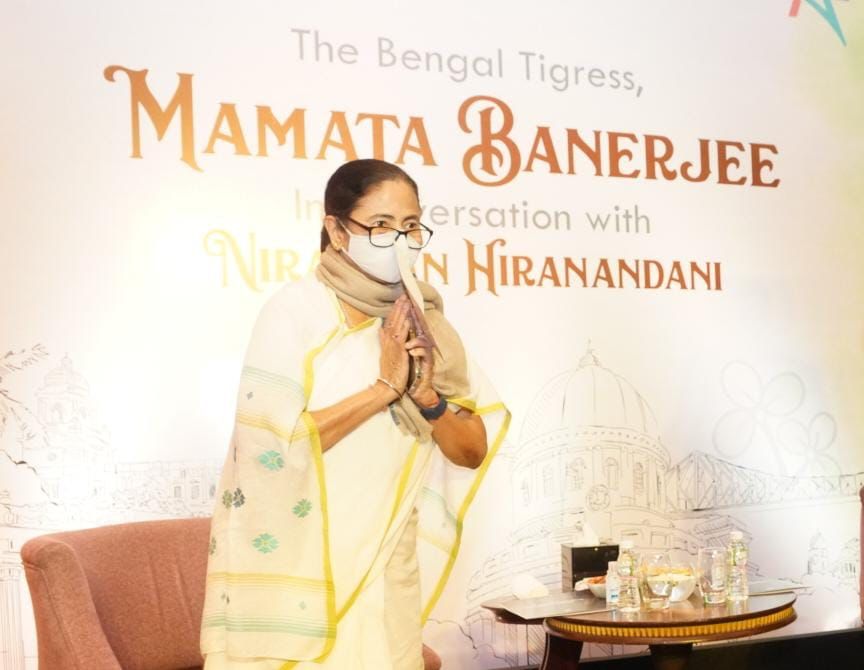Trinamool Congress supremo and West Bengal Chief Minister Mamata Banerjee denied the existence of the United Progressive Alliance (UPA) on her recent visit to Mumbai, following her meeting with NCP chief Sharad Pawar. “What is UPA? There is no UPA,” she stated, adding that it would be “easy” to defeat the BJP if regional parties band together.
Banerjee’s emphasis on “regional parties” underlines the message that the Congress is not in a position to challenge the BJP, and that an alternative collective of regional forces is a far superior force to reckon with. Banerjee, once herself a part of the UPA, was perhaps suggesting that it was time to relook at the Congress’ role as the “automatic leader’ in such alliances.
The UPA, formed in 2004, has had a chequered existence. It was abandoned by its principal partner, the Left, in 2008, and arm-twisted by certain allies, leading to its ultimate decimation in 2014.
The UPA was formed following the Atal Bihari Vajpayee-led NDA’s defeat in the 2004 Lok Sabha elections. With 145 seats, the Congress was only seven seats ahead of the BJP. Keeping the BJP out became the imperative for the secular Opposition, and the Congress naturally became the core, being the single largest party.
Veteran Communist leader Harkishen Singh Surjeet, then the CPM general secretary, took the lead in this struggle. The Congress and Surjeet eventually brought together 14 parties – RJD, DMK, NCP, PMK, TRS, JMM, LJP, MDMK, AIMIM, PDP, IUML, RPI(A), RPI(G) and KC (J) – for the post-poll alliance. Surjeet also roped in both Ajit Singh and Amar Singh with him.
The four Left parties — CPM, CPI, RSP and Forward Bloc — provided support from outside, on the basis of a Common Minimum Programme (CMP), which was signed on May 17, 2004. It became the guiding light for policies and programmes.
On May 22, 2004, Manmohan Singh took oath as Prime Minister of the UPA government. Among those who took oath were NCP chief Pawar, RJD president Lalu Prasad, LJP president Ram Vilas Paswan, JMM chief Shibu Soren, TRS chief K Chandrasekhar Rao, DMK’s T R Baalu, Dayanidhi Maran and A Raja, and PMK chief S Ramadoss’s son Ambumani Ramadoss.
The first party to leave the UPA was TRS in 2006. K Chandrasekhar Rao, then the Labour Minister, and his party colleague A Narendra quit the government over the TRS’s demand for a separate Telangana state.
However, the UPA’s biggest setback came in 2008, when the four Left parties withdrew their support over the government’s insistence on going ahead with the India-US nuclear deal. The government was pushed into a minority, but survived the no-confidence motion as Mulayam Singh Yadav’s Samajwadi Party came to its rescue — the same SP that had felt humiliated when it had not been invited to be part of the UPA in 2004.
The UPA returned to power in 2009, with the Congress surprisingly bagging as many as 206 seats. Although in a much more comfortable position than five years earlier, the Congress still needed allies. In came the Trinamool Congress and National Conference. Banerjee was given the Railways portfolio.
Compared to UPA-I, the list of allies had drastically reduced. Only five parties were sworn in with the Congress – the Trinamool Congress, NCP, DMK, National Conference, and the Indian Union Muslim League.
The UPA did not have the support of the Left this time. Also missing were Paswan and Lalu. The two had ignored the Congress while forming an alliance for polls in Bihar, and the Congress did not invite Lalu’s RJD to be part of the government. The RJD, however, extended support to the government, and so did the SP and the BSP. Lalu eventually withdrew support in 2010, protesting against the adoption of the Women’s Reservation Bill in Rajya Sabha.
Banerjee, meanwhile, dictated terms to UPA-II. In 2012, she asked her party colleague Dinesh Trivedi to resign as Railway Minister after he hiked passenger fares, and nominated party MP Mukul Roy as his successor. The Congress leadership had no option but to comply.
The same year, the TMC as well as the DMK quit the UPA. In March 2012, the DMK, the second biggest constituent, pulled its five ministers out in protest against the government for not taking up its concerns in the proposed UN resolution against Sri Lanka on alleged human rights violations of Tamils. In September, the Trinamool Congress pulled out its six ministers in protest against its decision to go ahead with implementation of FDI in multi-brand retail.
The Congress was decimated in the 2014 Lok Sabha elections, with its lowest-ever tally of 44. Although the grouping was still referred to as the UPA, there was, technically speaking, no UPA after 2014. Congress leaders generally use the term “like-minded parties” for an allied Opposition.
Banerjee is, therefore, in a way right in saying that there is no UPA. Its leaders have not met in a long time. The Congress’s relations with most of them are strained now, except with the DMK, the NCP and the JMM.
For the Congress and the remnants of the UPA, the newest challenge is the TMC’s aggressive expansion drive, Banerjee’s growing stature, and her efforts to reach out to the Congress’s allies.
Sources in the NCP have long been saying that Pawar is getting impatient with the Congress. There had been speculation that Pawar could initiate the realignment of regional forces. And indeed, after his meeting with Banerjee, Pawar said the Opposition parties have to provide a strong alternative. Asked if Congress would be a part of this strong alternative, he said: “All those opposed to the BJP are welcome to join us. There is no question of excluding anyone.”












